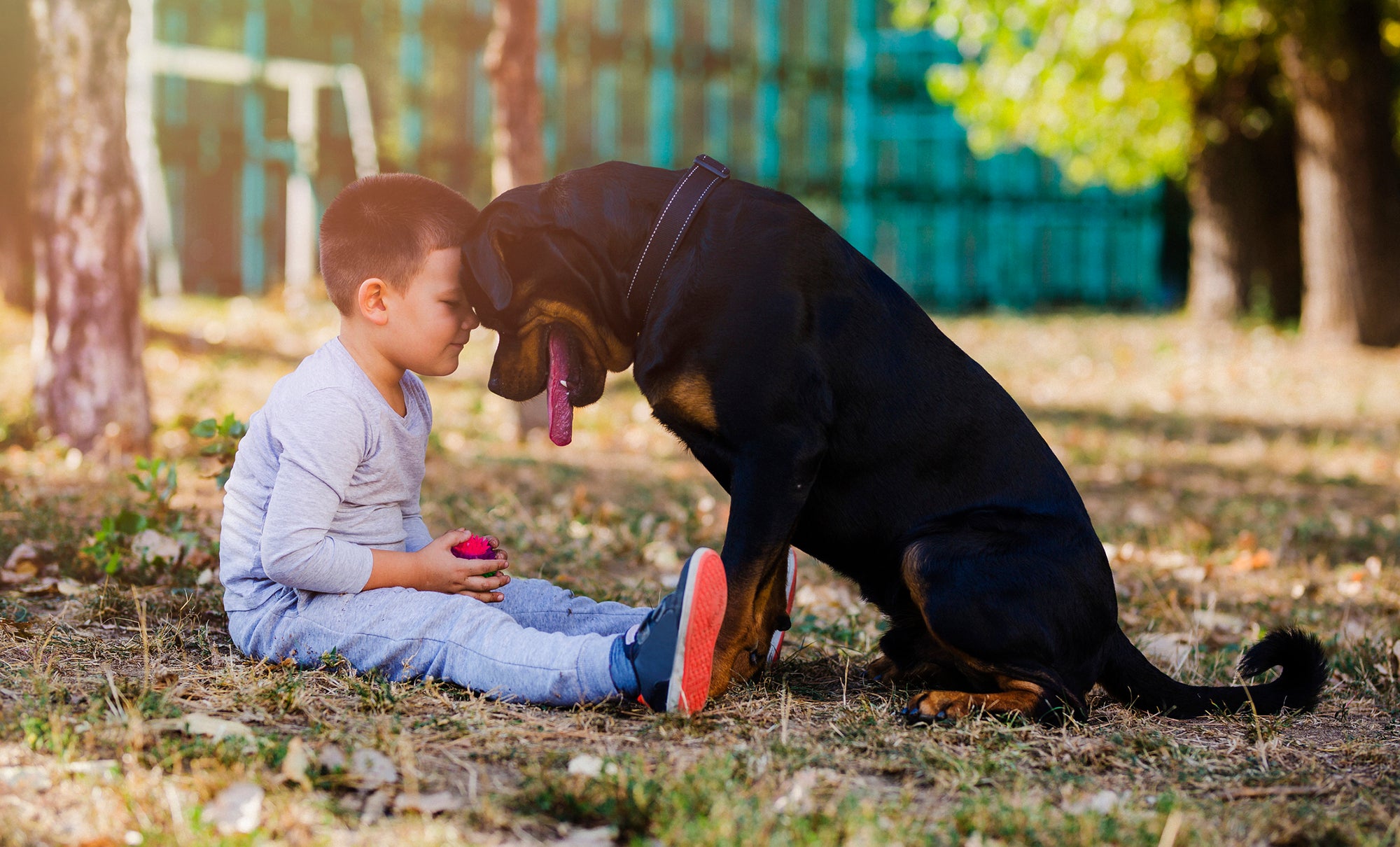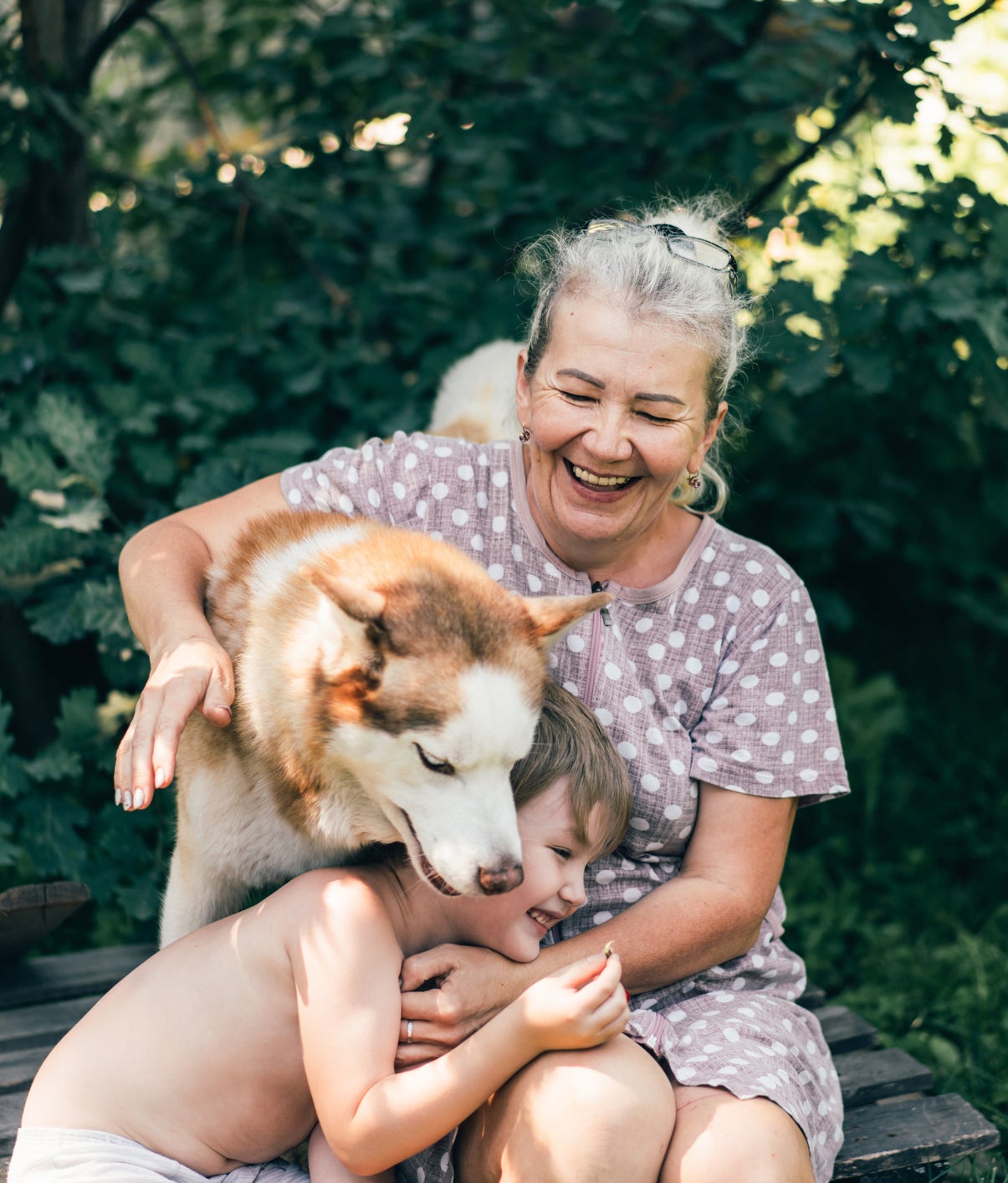14 Dog Bite Prevention Tips
May 5, 2022
By: WakeMed Children's Hospital
Categories: Children's, Emergency, Urgent Care
What’s not to love about a dog? They are furry, cuddly, playful friends.
Many dog breeds are great for families and enjoy spending time with everyone in the household, including their mischievous, little humans. So, to keep the good times going and prevent challenging behaviors, such as dog aggression, read our PSA on dog bite prevention.
Prevent Dog Bites
1. Allow a dog to sniff the back of your hand before touching it.
Studies suggest that a dog’s sense of smell is between 10,000 to 100,000 times more acute than a human’s sense of smell! Clearly, they pick up a lot through their olfactory receptors and will be more relaxed once they can get in a sniff or two.
2. When you see a dog out for a walk, always ask the owner for permission to pet the dog.
Some dogs are super friendly and eager to interact with humans they do not know. Others are focused on guarding their humans against danger and may see an approaching stranger as a threat. It’s best to ask the owner if it’s okay to pet the dog.
3. Never bark or growl at a dog.
Dogs are not always able to detect when you’re playing and will mimic aggressive behavior. Make a habit of interacting with your dog gingerly, so it doesn’t fear you or feel the need to protect itself.
4. Reach out to touch a dog under the chin or along its side instead of on the top of its head.
Dogs have their own language, and while pooch pats and belly rubs may earn you a doggy lick, reaching to touch a dog on the top of its head can be communicated as an act of aggression.

5. Always monitor young children when they are with a dog.
Young children are typically on the move, and full of jumping, jostling excitement. Their bouncy and unpredictable mannerisms can scare dogs. A scared dog is a dangerous dog, so always monitor young children around dogs, and teach your children how to interact appropriately.
6. Don’t let a child and a dog jump on a trampoline or other enclosed or unstable playground equipment together.
If a dog becomes fearful during rough play, and it can’t get away, it might bite.
7. Teach your dog basic commands, or sign up for a dog training class if you want help training your dog.
All dogs should understand basic commands, such as “stay,” “sit,” “come,” “leave it” and “wait.” Most commands can be taught and reinforced through treat and playtime rewards.
If you need help training your dog, there are several dog training and obedience classes available in Wake County, NC and beyond.
8. Allow a service dog to focus on its work.
Don’t attempt to engage, distract or play with a service dog. A service dog is a working dog. If it approaches you, follow it to find out how you can help.
9. When adopting an older rescue dog, realize that the dog may need additional support.
Sadly, not all dogs came from a loving environment. You may need additional support to help the dog adjust to your home. Talk to your veterinarian about concerning behaviors.
10. Do not take food from a dog that is resource guarding.
Dogs can be taught not to guard their food, but this needs to be done in a skillful way and may take time.
11. Avoid approaching a dog on the loose.
Instead of running toward or away from a loose dog, stand still like a tree. Look down, tuck your fists under your chin and stay completely still. Moving can stimulate prey instinct, making the dog feel the need to pursue or protect itself.
12. No matter how cute the dog may be, don’t run up to a dog you don’t know.
Approach carefully, so the dog does not feel threatened.
13. Avoid interacting with a dog that is guarding its owner or its property.
If a dog is actively guarding its owner or property, do not approach or engage with the dog. Signs a dog is guarding include growling, lunging, barking, holding its tail high or baring its teeth.
14. Make sure your dog receives regular veterinarian checkups.
A happy pooch is a healthy pooch. Maintain regular veterinarian appointments to guard against diseases, such as rabies, that could lead to dog aggression.
What to Do If Bitten
In the unfortunate event you or your child is bitten by a dog, don’t panic. If the owner is available, request proof that the dog is vaccinated against rabies. You’ll probably need the owner’s name and contact information, the dog’s name and the veterinarian’s name to get the proof you need.
If it is a minor bite, wash it out with soap and water and head to your closest urgent care. You might need antibiotics or a tetanus shot, depending on the severity of the wound and whether or not the dog was properly vaccinated. WakeMed Urgent Care and MyCare365 are open seven days a week with extended hours to serve your medical needs.
If the bite is severe, call 9-1-1. WakeMed Emergency Departments are always open and equipped to support patients with severe injuries.
About Safe Kids
Safe Kids Wake County and WakeMed Children’s are happy to offer helpful advice to keep you and your family safe. Want to learn more about other ways to keep your family safe? Check out the safety tips available at Safe Kids.